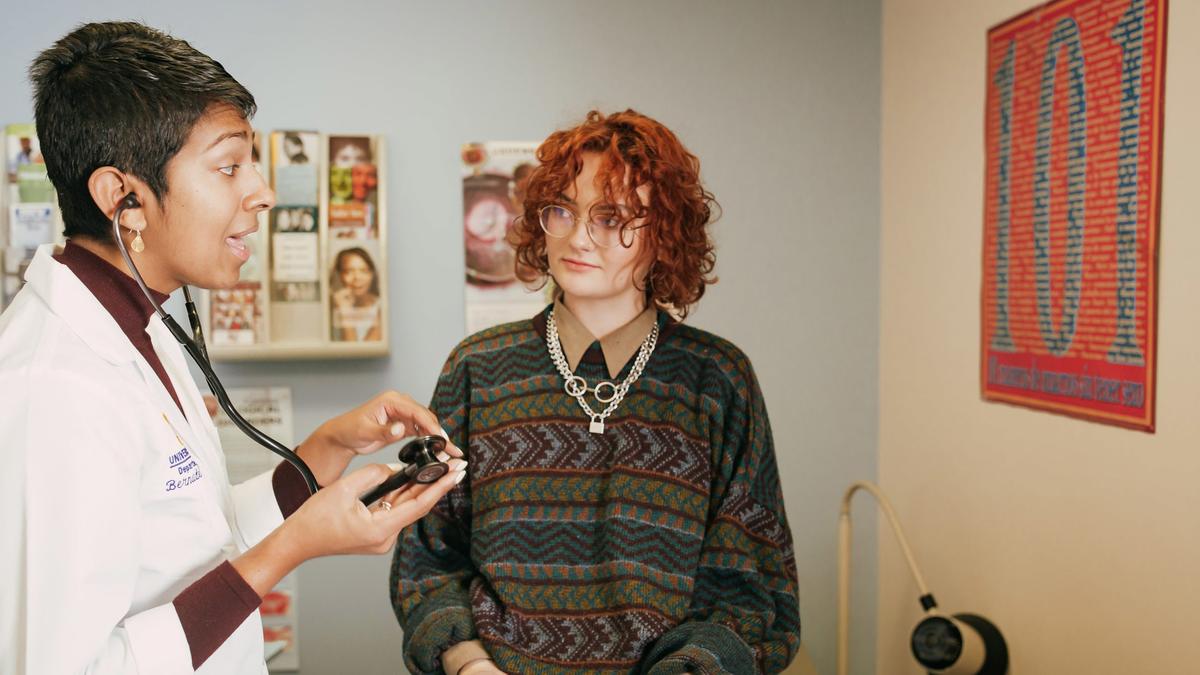
Youth In Health: Inclusive Stock Photography Collection. Adolescent Health Initiative. Heather Nash Photography. 2021
Normalizing Adolescent Time Alone with their Primary Care Clinicians
Time alone between health care clinicians and adolescent patients is a core element of quality adolescent primary care; however, recent estimates suggest that less than half of adolescents receive time alone during preventative visits. If expectations for the visit are unclear, the situation that may leave parents/guardians and adolescents asking, “Is this normal for my teen?” “Is this normal for me?” “Why do they need time alone? Is there a problem?”
With limited research on adolescent and parent opinions, expectations, and experiences of time alone, PRC researchers Christopher Mehus, Vanessa Voller, Janna Gewirtz O’Brien, Amy Gower, Renee Sieving, and colleagues recently explored adolescent and parent views and experiences related to time along during routine preventative visits in their recent article, "How is Time Alone Introduced? Experiences and Preferences of Adolescents and Parents."
Using semi-structured interviews with 35 Minnesota adolescents (aged 11-17) and their parents, Mehus and colleagues found that for most adolescents, time alone with their clinician is seen as an acceptable event. However, many noted they were unclear about the actual purpose of time alone with their clinician and often think it is only for secrecy and concerns.
Adolescents reported that the way time alone is introduced can make a big difference in their comfort level. Specifically, adolescents felt a universal, opt-out option (e.g., “At this age, I always ask parents to step out for a few minutes, are you okay with that?”) versus an opt-in option (“Would you like your parent to step out?”) was preferred. By saying, “At this age, I always…” normalizes the practice. By presenting time alone as the default option, adolescents are not put in the awkward position of asking their parent to leave the room.
Mehus adds, "When introducing time alone, developmental framing may be useful in dispelling the myth that time alone is only for health concerns, a belief held by many adolescents in our study and reported in other research.”
The study also showed that most parents supported adolescent/clinician time alone. Parents did note that time alone should not be a surprise, but rather should be understood as routine, so they are not left wondering if time alone was offered to their adolescent for a particular reason. Parents also felt that having standardized language to introduce time alone and a clear structure for time alone during the visit would be helpful for them and their adolescents.
“Using normalizing language and setting expectations for these preventative visits is key,” says Mehus. “Primary care clinicians and other clinic staff can take an active role in preparing adolescents and their parents/guardians for time alone. Providing pre-visit letters that explain how the visit will go, telling parents and patients around age 10 to expect time alone in future visits, and implementing standardized time alone practices within a clinic can all go a long way toward making time alone more comfortable for parents and adolescents.”